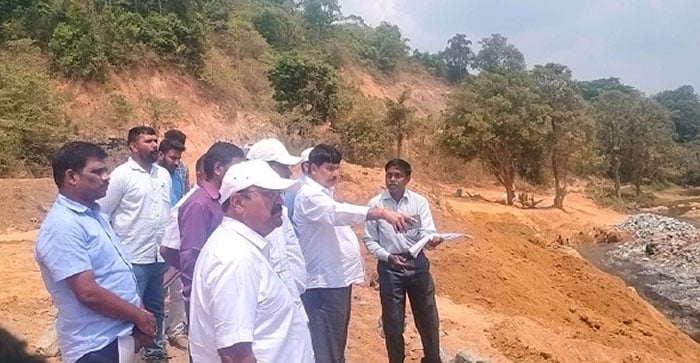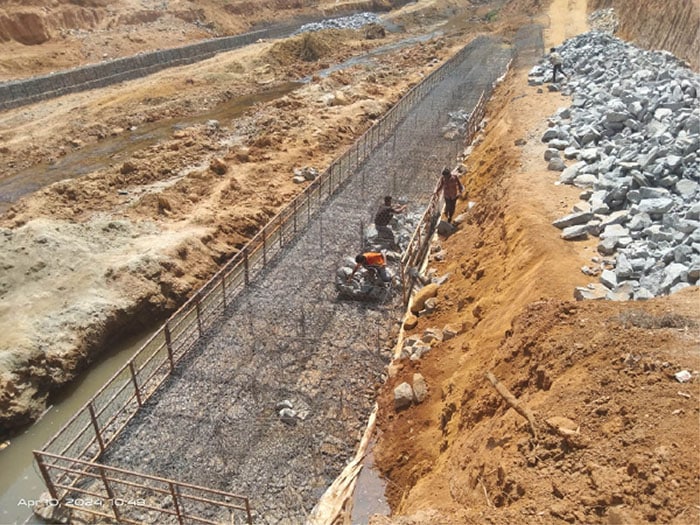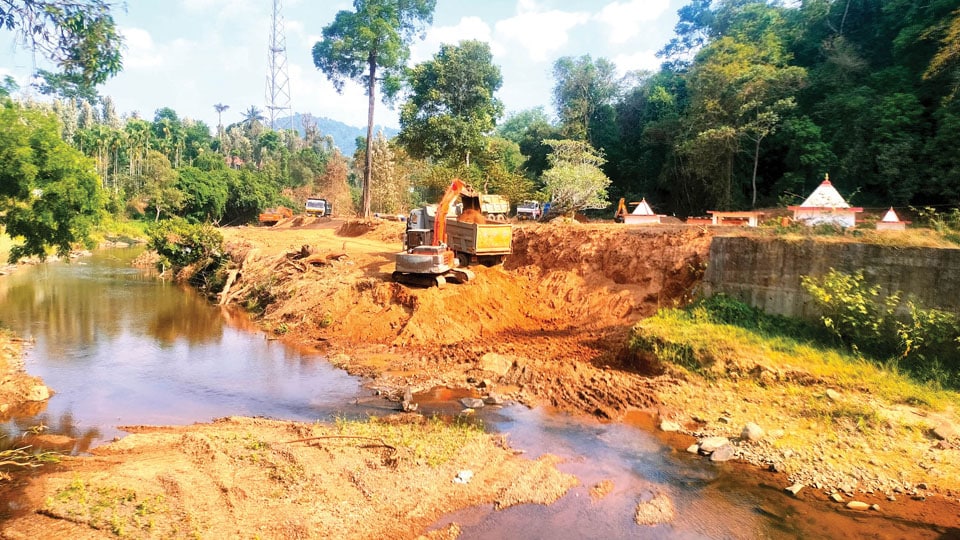CNNL MD, team visit work site; take stock of progress; to be completed by December 2025
Kushalnagar: Almost three-and-a-half years since the Karnataka Cabinet granted administrative approval and allocated Rs. 130 crore for silt removal from Harangi Dam in Somwarpet taluk, Kodagu district, the silt removal operations have commenced in the rivers surrounding the Harangi Dam, along with other associated development projects.
According to a 2019 study commissioned by the Karnataka Engineers Research Station (KERS) and conducted by Geo-Marine Solutions Pvt. Ltd, over one tmcft (one thousand million cubic feet) of silt has accumulated at Harangi Dam. The Detailed Project Report has been prepared by Cauvery Neeravari Nigam Limited (CNNL).
The current silt accumulation is expected to exceed the levels recorded in 2019. Harangi Dam serves as the primary reservoir for Cauvery water supply from the catchment areas to KRS Dam in Mandya, which is the lifeline of South Karnataka and Tamil Nadu.
The contract for silt removal was awarded to Maharashtra-based Shiva Constructions in October 2023, although approvals were pending at that time. The State Government began releasing funds in phases from January 2024 and approved the desilting project.

CNNL MD visits site
On Apr. 12, a team led by CNNL Managing Director Mahesh, Superintending Engineer Raghupathi, Executive Engineer Devegowda, Assistant Executive Engineers Puttaswamy and Kavirasadh (Quality Control) and Assistant Engineers Siddaraju and Sowmya visited the work site and inspected the progress of works. According to officials, the contractor is expected to complete the project by December 2025.
Currently, only river desilting operations are underway, with approval for desilting the Harangi Dam (backwaters) still pending. The accumulation of silt has led to a significant decrease in the water level within the reservoir.
4.75 kilometres of Gabion Walls
The Harangi Dam spans approximately 42 kilometres in length and Gabion Walls are planned to be constructed along both sides, covering a stretch of about 4.75 kilometres. This accounts for approximately 10 to 12 percent of the total length and aims to prevent mud (from the hills due to rains and floods) from re-accumulating through previous gaps.
Fourteen specific locations have been identified for the construction of Gabion Walls. These walls consist of stacked stone-filled gabions interconnected with wire. Typically, Gabion walls are constructed with a batter (angled back towards the slope) or stepped-back design, rather than being stacked vertically.
In addition to specific locations, nearby areas have also been identified for the construction of Gabion Walls. The silt removal process is currently underway at the Hammiyala River, Hattihole River and Gargandur River, which are prone to extensive flooding.

Silt harvester method
For the removal of silt from these rivers, a method known as the ‘silt harvester’ is employed. This technique involves the excavation of deep trenches to the water level, allowing the flowing silt to be collected within these trenches while maintaining a smooth passage for water. This method is being implemented at over 250 sites along the 42-kilometre length of the Harangi Dam to collect silt effectively.
In addition to silt removal efforts, several infrastructure projects are planned in the area. A new bridge will be constructed at Hammiyala village to replace an old and damaged bridge. Furthermore, a hanging bridge will be built to facilitate the movement of people to a nearby Bhadrakali Temple.
However, the desilting process for the Harangi Backwaters requires approvals from both the Forest Department and the local Panchayats, which are still pending. Additionally, there is a need to identify suitable locations for the disposal of the substantial amount of silt that will be extracted during the desilting process. These steps are needed for the completion of the overall project.








Recent Comments